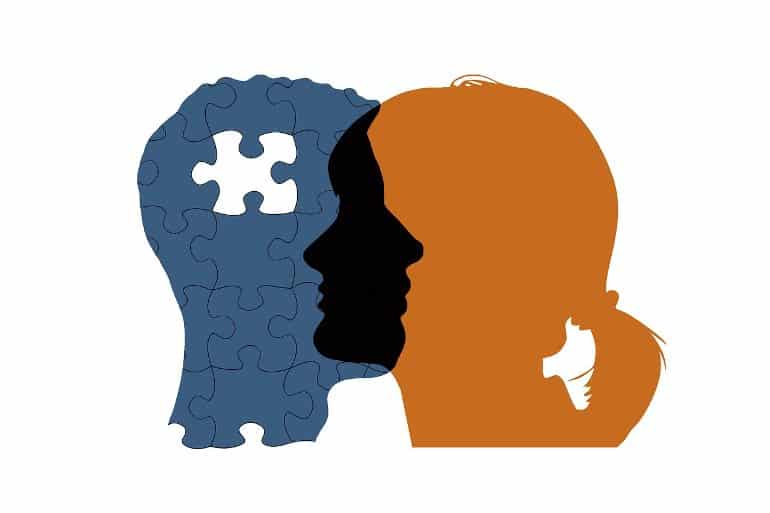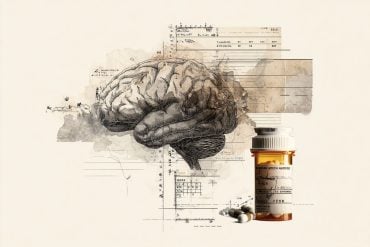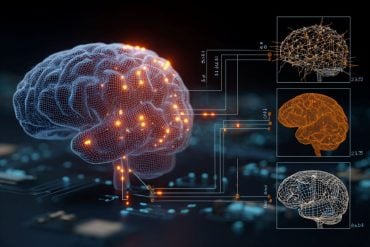Summary: Using lesion network mapping, researchers identified brain circuits associated with addiction remission. The findings provide a new target for the development of treatments for addiction.
Source: Brigham and Women’s Hospital
In the United States, substance use disorders are a leading cause of death among young people. Treatments such as deep brain stimulation hold promise for helping people overcome addiction, but many questions remain about what brain areas should be targeted.
Researchers are gaining new insights from patients who are no longer addicted to nicotine after experiencing a brain lesion, such as a stroke.
Using a new technique known as lesion network mapping, researchers at Brigham and Women’s Hospital have mapped addiction remission to entire brain circuits rather than specific brain regions, pointing to new targets for treatment.
Their results are published in Nature Medicine.
“By looking beyond individual brain regions and, instead, at the brain circuit, we have found targets for addiction remission and are eager to rigorously test them through clinical trials,” said Michael Fox, MD, PhD, of the Department of Neurology at the Brigham.
“Ultimately, our goal is to take larger steps towards improving existing therapies for addiction and open the door for remission.”
Neuromodulation therapies, such as deep brain stimulation, transcranial magnetic stimulation, and MRI-guided focused ultrasound, allow clinicians at the Brigham’s Center for Brain Circuit Therapeutics to directly target brain circuits and improve symptoms in ways that may not be possible through treatment with medication.
But knowing the location to target is critical. In a previous study, researchers used lesion network mapping to examine patients whose essential tremors resolved, confirming targets used in treatment with deep brain stimulation.
The study authors set out to apply the same approach to addiction remission.
“Although we know a great deal about the neurobiological mechanisms in addiction, treatment options are still very limited.
“Our findings with essential tremor made us realize the potential of this approach to localize key brain circuits mediating symptom improvement,” said Juho Joutsa, MD, PhD, of the Turku Brain and Mind Center and Clinical Neurosciences at the University of Turku.
Fox and colleagues used data from two independent cohorts of patients addicted to nicotine who then suffered a brain lesion, usually from a stroke.
Fox’s team compared lesions in patients who were unable to quit smoking to lesions resulting in remission of smoking addiction. They then used a database known as the human connectome to map each lesion to the larger brain circuit. They found that the two smoking lesions datasets that led to remission of smoking addiction mapped to a specific brain circuit.
To their surprise, they also discovered in a third alcoholism lesion dataset that a reduced risk of alcoholism mapped to a similar brain circuit, suggesting a potentially therapeutic, targetable neural pathway for addiction in general, rather than addiction to a specific substance.
“Although neuromodulation treatments using electricity or even brain lesions have shown promise in relieving substance addiction, the therapeutic target has been unclear,” said Fox.
“Now that our study has identified a target — a specific human brain circuit — we hope to test whether targeted neuromodulation to this brain circuit provides sustainable symptom relief to our patients.”
The authors acknowledge two primary study limitations. First, the results are solely based on retrospective analysis of existing datasets and, second, the datasets examined only covered specific substances of abuse.
The researchers, therefore, advocate for prospective validation of their findings through clinical trials testing and an examination of additional substances of addiction to determine if their findings can be applied widely.

“We were excited to discover that our mapped lesions associated with addiction remission led back to a common brain circuit. While our findings point towards therapeutic targets for addiction, we need to test these targets in randomized clinical trials,” said Fox.
“We study brain lesions in the context of the brain circuit because it provides a powerful way to understand the causal links between addiction and our neuroanatomy. We have hope that we can make significant strides towards helping patients with substance use disorders.”
Disclosures: Fox and Shan H. Siddiqi own patents on using brain connectivity to guide brain stimulation. Fox and Siddiqi have received investigator-initiated research funding from Neuronetics Inc, and are both consultants to Magnus Medical, which are all unrelated to the present work.
Funding: This work was supported by the Academy of Finland (#295580), Finnish Medical Foundation, Finnish Foundation for Alcohol Studies, National Institute on Drug Abuse (NIDA DA 048085), Brain & Behavior Research Foundation, Intramural Research Program of the NIDA/NIH, Sidney R. Baer Jr Foundation, NIH (R01MH113929, R21MH126271, R56AG069086, R21NS123813), Nancy Lurie Marks Foundation, Kaye Family Research Fund, Ellison/Baszucki Foundation, and the Mather’s Foundation.
About this addiction research news
Author: Jessica Pastore
Source: Brigham and Women’s Hospital
Contact: Jessica Pastore – Brigham and Women’s Hospital
Image: The image is in the public domain
Original Research: Closed access.
“Brain lesions disrupting addiction map to a common human brain circuit” by Michael Fox et al. Nature Medicine
Abstract
Brain lesions disrupting addiction map to a common human brain circuit
Drug addiction is a public health crisis for which new treatments are urgently needed. In rare cases, regional brain damage can lead to addiction remission. These cases may be used to identify therapeutic targets for neuromodulation.
We analyzed two cohorts of patients addicted to smoking at the time of focal brain damage (cohort 1 n = 67; cohort 2 n = 62). Lesion locations were mapped to a brain atlas and the brain network functionally connected to each lesion location was computed using human connectome data (n = 1,000).
Associations with addiction remission were identified.
Generalizability was assessed using an independent cohort of patients with focal brain damage and alcohol addiction risk scores (n = 186). Specificity was assessed through comparison to 37 other neuropsychological variables.
Lesions disrupting smoking addiction occurred in many different brain locations but were characterized by a specific pattern of brain connectivity. This pattern involved positive connectivity to the dorsal cingulate, lateral prefrontal cortex, and insula and negative connectivity to the medial prefrontal and temporal cortex.
This circuit was reproducible across independent lesion cohorts, associated with reduced alcohol addiction risk, and specific to addiction metrics. Hubs that best matched the connectivity profile for addiction remission were the paracingulate gyrus, left frontal operculum, and medial fronto-polar cortex.
We conclude that brain lesions disrupting addiction map to a specific human brain circuit and that hubs in this circuit provide testable targets for therapeutic neuromodulation.






